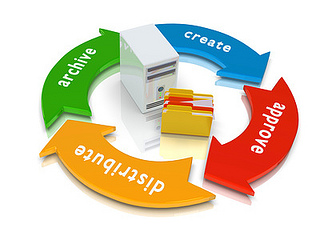 Your content is always changing, growing, and evolving.
Your content is always changing, growing, and evolving.
What about in other languages? If you don’t keep everything aligned with the realities of today, you risk misinforming your customers, the consequences of which could be severe.
Though updating the translations can be a chore, it doesn’t have to be. Follow these three simple steps with your translation team to ensure that your update goes off without a hitch.
Step 1: Identify What’s Changed
This sounds like the easy part. It’s also the most important.
If you’re translation team is keeping an accurate, up-to-date translation memory of all your documents, this step is something their software can do with relative ease.
Otherwise, it’s critical that you provide your team with the three relevant documents for this task: the updated document, the existing translation, and the previous version of the original that corresponds to the translation.
It’s that last document that we usually forget, but it is invaluable when it comes to identifying changes.
If you use a document management system to track each change and update internally, you can provide a change log along with the three documents and potentially save the team some time.
If you don’t, your translation team can likely identify what’s changed using the old version and updated version of the document. This is better than having one of your coworkers go back through the document and mark what’s changed. It’s easy for a minor addition, deletion, or change to slip through the cracks, and over the course of many updates, these minor details can really add up, ultimately sending the wrong message.
Step 2: Implement the Changes in the Other Language
The translation itself would clearly be done by your translation team. The implementation, though, can be a bit more involved, and sometimes is best done by your designer or developer.
This depends on the content’s format. A Word document, for example, probably won’t need much work after the text is translated. A brochure made in InDesign, however, likely involved some Desktop Publishing (DTP) work when it was first translated, and will need additional attention after being updated. Depending on the amount of updates, it may make sense to provide a table to the graphic designer who can make the changes directly in InDesign, or to have the translation team generate an updated InDesign file which the designer can then review and adjust as needed.
Websites and applications, like the brochure above, will need some extra assistance before they go live. Any testing that was performed with the initial translation may be of benefit to the update as well. Decide which steps to use based on the scale of the update, risk of introducing a serious error, and the consequences of such an error.
And don’t forget to remind your translation team to update your translation memories so the updates are readily available for future translations. Keeping a translation memory improves consistency and decreases costs.
Step 3: Review the Updated Translation
Like any translation, an update can benefit from a final review. This could be by an internal reviewer, a subject-matter expert, or an end user.
If there were a lot of updates, it’s probably worth the extra expense to have the entire document reviewed. In the case of minor updates, though, focusing the reviewer’s attention on the changes is sufficient.
With these simple steps, you can make updating translations part of your content lifecycle. Remember that your customers evaluate you based on the content you provide in their language, even when they know it’s not your primary one.
